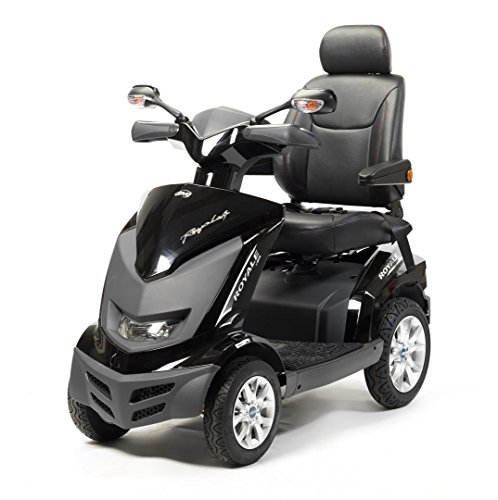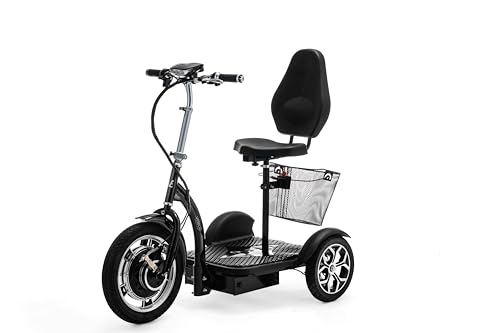Guide To Mobility Scooter Road Or Pavement: The Intermediate Guide To …
페이지 정보

본문
 Mobility Scooter Laws - Where Can I Drive a Mobility Scooter?
Mobility Scooter Laws - Where Can I Drive a Mobility Scooter?Mobility scooters are often the primary mode of transport for older adults. They allow them to maintain their independence and avoid the need for assisted living. However, it's important to be aware of how to operate a scooter safely and legally.
 Class 2 scooters are only allowed to travel at pedestrian speed (4 4 mph) on sidewalks and pedestrian areas. If you plan to travel further distances, a 6-8 mph Road Mobility Scooter is more appropriate.
Class 2 scooters are only allowed to travel at pedestrian speed (4 4 mph) on sidewalks and pedestrian areas. If you plan to travel further distances, a 6-8 mph Road Mobility Scooter is more appropriate.Safety
Based on where you live depending on where you live, there could be laws governing the use of mobility scooters on pavements and roads. These guidelines typically outline specific speeds for scooter users and safety guidelines. It is crucial to follow these rules in order to ensure your safety and the safety of pedestrians or other road users. It is also recommended to obtain insurance for your mobility scooter. While it's not a legal requirement, this will give you assurance should you ever be involved in an accident or a mechanical malfunction.
It is important to keep in mind that mobility scooters aren't intended for driving at high speeds and are not able to keep up with traffic. It is crucial to drive slowly and cautiously when driving on a road or pavement road. This includes obeying speed limits and yielding to pedestrians. It is also recommended to avoid distractions such as headphones and mobile phones while driving the scooter. It is also a good idea to avoid driving through roundabouts when you can, as they can be extremely dangerous for scooters.
Regular maintenance and routine inspections will also ensure safety of your scooter. Checking the batteries, lights and tyres to ensure they're functioning properly is a part of this. It is essential to be aware of potholes, and to develop strategies to avoid them. You can do this by learning about the formation of potholes and their hazards, as well as practicing defensive driving techniques.
Dropped kerbs is a good idea to navigate roads and pavements safely. These features can help to lower the risk of tripping and falling, as well as providing increased accessibility for disabled and elderly pedestrians. Using a dropped kerb is particularly beneficial in areas with a lot of pedestrians because it allows you to turn around without having to worry about blocking or hindering foot traffic.
It is also essential to report any potholes that you encounter as this will help to improve the overall condition of the local roads and pavements. Potholes are usually caused by poor drainage, old asphalt, shrinkage cracking, and utility excavations. By bringing these issues to light and addressing them, you can create an environment that is safer for all road users and pavement users.
Mobility
Mobility scooters can be lifelines for people with mobility Scooter road or pavement or physical disabilities they can you ride mobility scooters on the road provide them with independence and a better quality of life. However, they need to be used safely and in compliance with regulations that govern their operation. These scooters are classified as class 2 and class 3 vehicles with different speed limits and features that determine their legality in specific areas.
A mobility scooter for pavement is ideal for individuals who are looking to travel short distances within enclosed spaces, like in shopping centres or supermarkets. These mobility scooters are designed to operate solely on the pavement and have a maximum speed of 4 mph. They can also traverse the streets at pedestrian crossings and don't require registration or an indicator or horn. These scooters are smaller and lighter than the mobility scooters of class 3. They are also more portable and easier for you to store.
In contrast, mobility scooters in class 3 are designed for pavement and road use and can reach a maximum speed of 8mph. These scooters must be registered with the Driver and Vehicle Licensing Agency and must be equipped with indicators and a bell. They can be driven on the road but it's not recommended to drive a scooter at speedy speeds on a dual-carriageway.
Both Class 3 and pavement scooters are equipped with a range of features that enhance their mobility. The majority of models come with comfortable seats and suspension for a smooth ride. The models are available in a variety of sizes to suit your individual requirements. They can also be equipped with accessories like baskets, crutch or cane holders, as well as USB charger ports.
While it's not mandatory to insure your scooter however, it is recommended you do it for peace of mind. In addition, you might want to consider breakdown cover to assist with the cost of fixing or replacing a damaged mobility scooter. In addition to these aspects it is crucial to familiarize yourself with the laws that govern scooter use in your area.
Comfort
Many people who want to remain independent as they age realize that they are no more capable of driving a car however they are in a position to control the controls of a mobility scooter. They are able to still enjoy the countryside and stay connected to family and friends, and even go to their local cricket stadium while remaining mobile and safe.
A pavement or road mobility scooter can enable users to travel farther than a conventional model for travel, and may be equipped with extra features to increase safety and comfort. For example the seats on these models are cushioned or swivel, making it easier to take off and on the vehicle, as well as to alter the angle of the steering wheel to best meet the needs of the user. These models are also fitted with indicators, a horn, and suspension systems built-in to absorb the shocks of road bumps.
Most road or pavement mobility scooters are able to handle moderate inclines, but they will not be able to tackle steep hills unless specifically made for the terrain. These models are more powerful and come with larger batteries and engines than the travel scooters, allowing them to travel more quickly and farther between charges.
Like any motor vehicle, it takes some time to get used to the operation of a pavement or road scooter. However, most people who are used to driving a car or cycling will find it relatively easy. Some manufacturers offer training for new users in order to assist them in understanding how the controls work. It is recommended that anyone contemplating purchasing this type of scooter test a number of different models to determine which is the most comfortable and simple to operate for them. It is also important to ensure that the controls can be reached comfortably and that the levers for operation are designed so that they can be operated using both hands. This will allow you to continue using the mobility scooter even if your hand gets weaker.
Disassembly
Mobility scooters are an excellent option for people with mobility issues. Many people are not aware of the rules and guidelines which govern the use of these vehicles. This blog post will answer frequently asked questions regarding where mobility scooters can be driven and the legal responsibilities of the driver.
It's important to remember that mobility scooters aren't motorbike and shouldn't be operated on roads. They're not designed to keep up with traffic, and can cause injury to other drivers if they're used incorrectly. It's not a good idea to drive your scooter into a shopping mall or shop. These areas are not designed to accommodate them and could cause damage to the storefronts or injure the other shoppers and you.
Maintenance is a different aspect to be considered. It is essential to conduct regular inspections and routine service by an expert. This will extend the life of your scooter, ensure safety and reliability, as well as reduce the damage caused by potholes. This includes checking and maintaining the tyres as well as ensuring that the suspension and shock absorbers are working properly, and fixing any issues that might arise.
It's also an excellent idea to purchase a breakdown insurance policy for your scooter in case it has any issues on the road. Although it's not legally required, it will provide you with assurance that your scooter is covered in case of an accident or breakdown. The cost of breakdown cover is dependent on the company and the type of scooter you have. It's worth researching and finding out which insurance companies provide this service. You can also read impartial reviews and read what other owners of scooters have to say about this service and insurers. This will help you make an informed choice about the breakdown coverage you pick. The best choice for you will be determined by the amount of driving you plan to do, and the distances that you'll travel. A pavement scooter is the best option for short trips and areas that have more pedestrians, whereas the class 3 scooter might be better suited if you plan to travel longer distances.
- 이전글tante bispak bokep semok sma toket gede menyala banget 24.08.10
- 다음글CBD Products 24.08.10
댓글목록
등록된 댓글이 없습니다.


